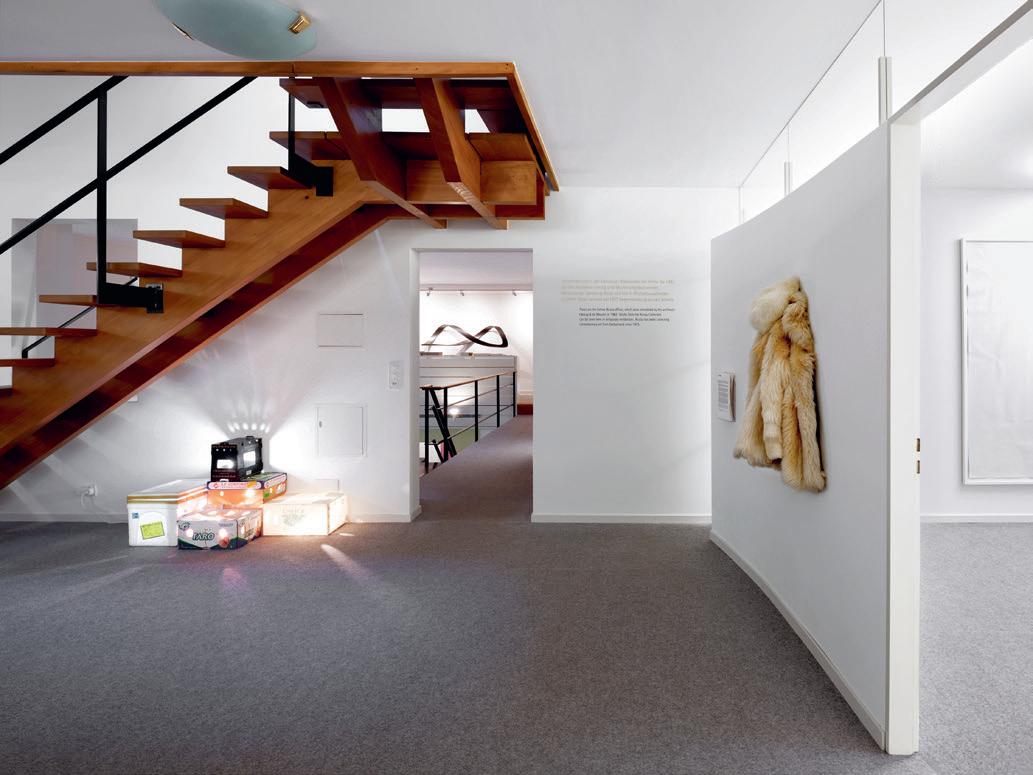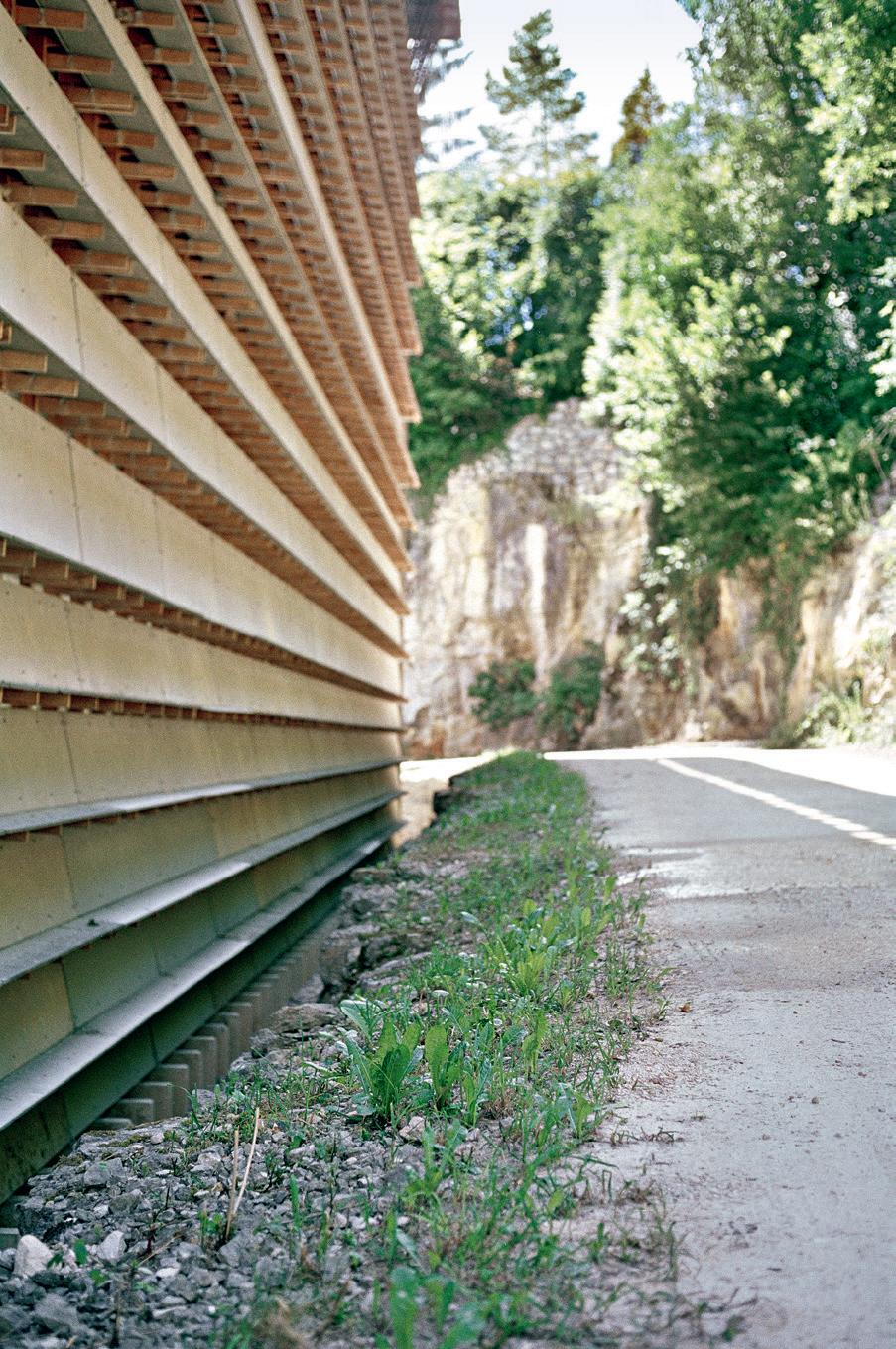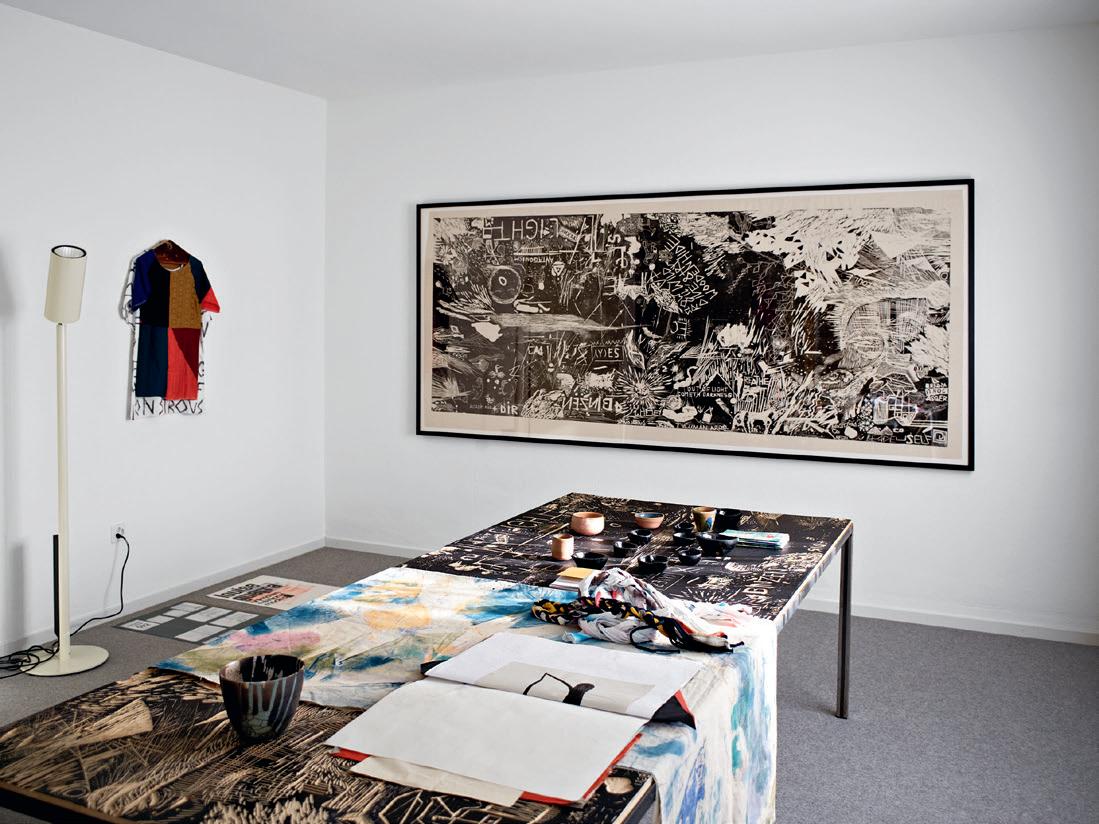




Tobias Madison and Emanuel Rossetti, No, installation comprising 5 floor objects, 2013; Erik Steinbrecher, Les Cheveux de Monsieur Rousseau, 2011–2012, fur coat, artificial hair, cord, 90 × 60 × 20 cm; in the background: Jürg Stäuble, Schlaufe, 1986/1994, plywood model, graphite, 50 × 210 × 50 cm Exhibition view, Gallery, 2023






their very nature, have to reference historical models, though without adopting their programmatic premises as a rule.
The free application of methods that have only just recently become historical brings with it not just the risk of eclecticism but also, as the Ricola Collection’s holdings of Perret, Echakhch, Pamela Rosenkranz, Ana Roldàn, Emilie Ding, and Vanessa Safavi make clear, an opportunity to update and reappraise the past. Safavi, for example, speaks of her art as work on our civilization’s unconscious. She has returned to these themes fully cognizant that—and perhaps even because—they were a concern of the early modernists, too. Yet it is not so much the utopias and modernist obsessions themselves that interest her as their articulation in works that are slowly fading away and becoming alien to us. Some works by the aforementioned artists turn on the places in which art is staged and even the act of staging art itself. The different ways in which genuinely modern issues can be recontextualized in a museum was an important subject for contemporary art in the early days of this century. Nor was it just younger artists who were discovering it, since many previous generations were sounding it out long before they were. Vaclav Pozarek in Bern, for example, has long been working in a visual idiom schooled in Constructivism and Conceptual Art. Then there are the echoes of Cubism, Futurism, and anthroposophy to be found in the recent paintings of Helmut Federle—alongside his long-standing engagement with Japanese culture. John M Armleder is another artist who is interested in discourse for its own sake, and who throughout his career has worked with the norms of the art world. Also worthy of mention from the intermediate generation are Erik Steinbrecher, whose broken minimalism mediates between high and low, and Adrian Schiess, who as a painter with an instrumental understanding of abstract painting bridges the gap between the postwar avant-garde and the present. For all these artists, the attempt to recontextualize modernism is basically an attempt to fathom our times intellectually, to leave a personal stamp on them, and to see the work of modernism through to completion in the present.



Shirana Shahbazi [Komposition-48-2012], [Komposition-46-2012], [Komposition-56-2012], 2012 C-print on aluminum, ed. 2/3 +1 AP, 3 parts, 210 × 168 cm each Exhibition view, 2018




Kaspar Müller
Untitled (Tisch mit CDs und div. Objekten), 2015
Various materials on a table by Bruno Mathsson (1907–1988) for DUX, ca. 1980
Exhibition view, 2018
Louise Guerra
Figuren der Gemeinschaft, 2014
Table, woodcut, cloth, 13 ceramics, exercise
books, posters, books, T-shirts
Table: 75 × 286 × 115 cm
Exhibition view, gallery, 2022


Shirana Shahbazi’s advertisement shows a wet, partially sucked candy. Her photograph of 2012 emphasizes pleasure as a key factor in her perception of Ricola’s herb drops.
Vivian Suter has lived in Panajachel, Guatemala, since 1983. In 2016, she photographed her studio surrounded by dense vegetation along with the painting for the Ricola art ad that she painted there.
Kaspar Müller took his photograph of a red glass ball in front of a high Alpine panorama in 2018. The location, a village just below the tree line in the Valaisan Alps, commands views of Grande Dent de Veisivi (3418 m), Dent de Perroc (3676 m), and, obscured by the ball, Dent d’Hérens (4171 m), a peak to the west of the Matterhorn.
The monochrome background of Pamela Rosenkranz’s advertisement of 2020 matches the color of a human tongue. After all, every candy comes into contact with the warm pink of a tongue.


